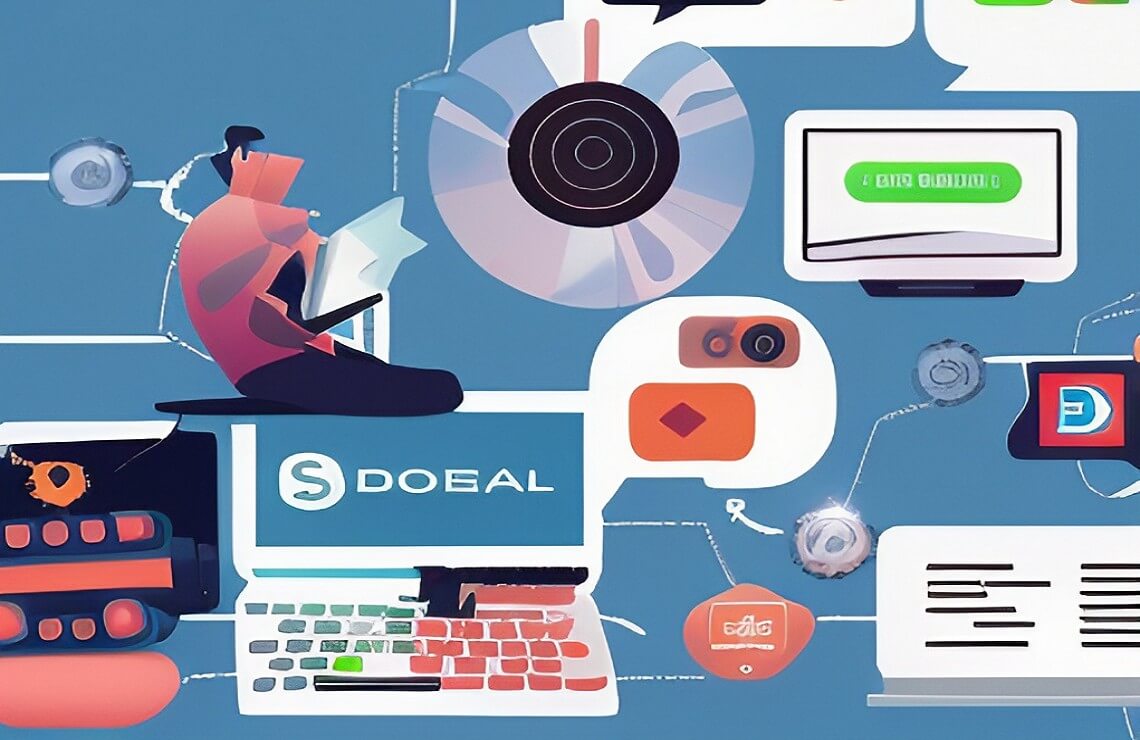Decentralized Applications (dApps) are digital applications or programs that exist and run on a blockchain or peer-to-peer network of computers instead of a single computer. DApps have no central authority controlling them and they can be used for various purposes such as gaming, finance, social media, etc. Let’s get to know more about them.
What makes dApps different from traditional apps
Decentralized Applications (dApps) are revolutionizing the way we use technology in many different ways. DApps work differently than standard web apps as they are built on a decentralized and distributed platform because they offer users complete control over their data and assets, eliminating the need for a middleman or third-party provider to manage them.
This means that users have more autonomy when it comes to their digital assets and data. Also, dApps are open-source and cryptographically secure, with their source code publicly available for users to view, verify, use, copy, or modify it.
Examples of dApps
1. Decentraland: A virtual reality platform that allows users to create, experience, and monetize content and applications in a 3D interactive world.
2. Uniswap: An automated protocol for exchanging Ethereum tokens based on liquidity pools instead of order books.
3. Compound Finance: An open-source decentralized protocol for creating money markets with flexible interest rates determined by the supply and demand of assets held within it.
4. Augur: A prediction market built on the Ethereum blockchain that enables anyone to forecast outcomes of events while earning real rewards when their predictions are correct.
5. CryptoKitties: A collectible game where players can buy, sell, breed, or trade digital cats using Ether cryptocurrency as an incentive system to encourage interaction on the platform.
6. Dharma Protocol: An open-source peer-to-peer lending platform powered by smart contracts which allow users to borrow or lend funds without requiring any custodial control over user funds or identity information.
7. Aragon Network: A decentralized autonomous organization (DAO) solution that helps people create and manage companies across borders in an efficient way.
Features of decentralized apps (dApps)
1. Open-Source: Decentralized apps are open-source, meaning their source code is publicly available for users to view, verify, use, copy, or modify it. This helps in ensuring the security and transparency of the application and its operations.
2. Autonomy: These apps give users complete control over their data and assets as there is no central authority controlling them. This helps in eliminating the need for a middleman or third-party provider to manage these assets and data.
3. Security: DApps are cryptographically secure, meaning they offer users a high level of security that is difficult to replicate or breach.
4. Immutability: They are built on distributed ledger technology, which is immutable, meaning the data and records stored in the blockchain cannot be changed or altered in any way.
5. Transparency: DApps are completely transparent, meaning all data and transactions stored on the blockchain are viewable by anyone with access to the network. This ensures that all activities that occur in the app can be tracked and verified by users.
6. Cost-effectiveness: Because there is no need for a centralized authority, decentralized applications eliminate the need for costly middleman fees. This helps to reduce the cost of transactions and makes them a bit more affordable for users.
Risks associated with using dApps
1. Complexity: Decentralized applications can be difficult to set up and use, as they require users to have technical knowledge and understanding of blockchain technology in order to make the most of them. This could lead to a steep learning curve for those who are not familiar with decentralization, making it difficult for novice users to use dApps.
2. Scalability: Decentralized applications can be difficult to scale due to their reliance on the blockchain, which can become congested with transactions during periods of high demand. This can lead to slow transaction times, making dApps somewhat less desirable than centralized alternatives.
3. Power: The operation of decentralized applications (DApps) requires a substantial amount of computational power, which increases the risk of network congestion caused by these applications. This might have a negative impact on the transaction per second (TPS) rate of the system, which in turn could cause network congestion and drive up gas fees.
Conclusion
Decentralized Applications (DApps) offer users a unique way to interact with digital applications and services in an autonomous, secure, and transparent manner. However, DApps can be complex to set up and use due to their reliance on blockchain technology as well as scalability issues which could lead to slow transaction times. Furthermore, the user experience of these applications may not always be ideal due to their complexity. Nevertheless, if you are able to familiarize yourself with how decentralized apps work and understand the benefits they provide over traditional centralized alternatives then they can prove extremely beneficial when used correctly.





